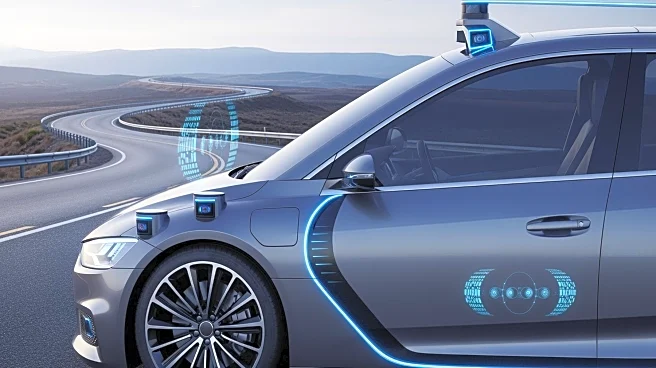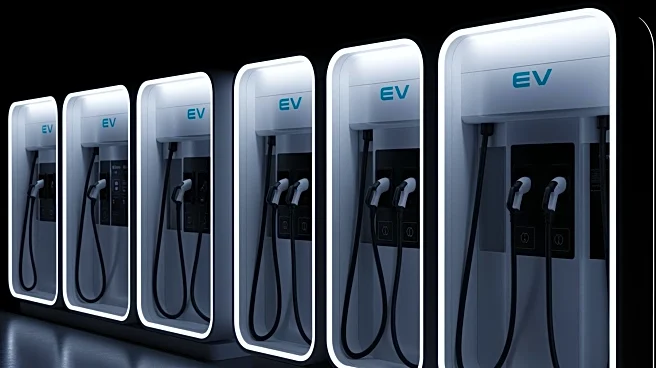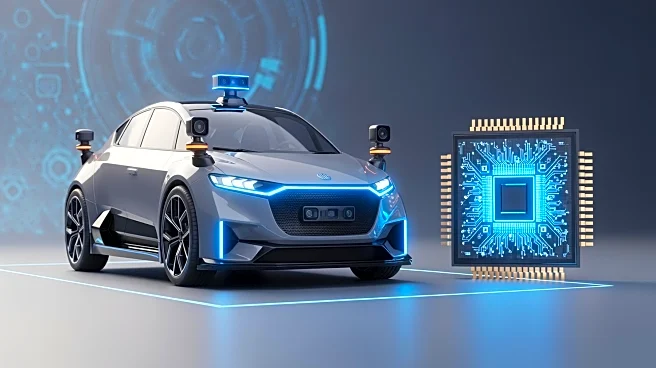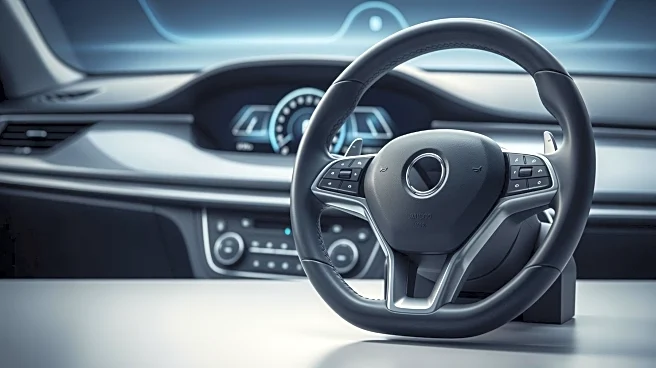What's Happening?
General Motors has announced its intention to develop a Level 3 'eyes-off driving' system, which allows drivers to disengage from active vehicle control on certain highways. This technology represents
a step towards fully autonomous vehicles, with GM planning to introduce it in the Cadillac Escalade IQ by 2028. The system will eventually be available across other GM brands such as Chevy, Buick, and GMC. While drivers can engage in activities like using their phones or watching videos, they must remain ready to take control if necessary. The liability for accidents during 'eyes-off' driving remains a contentious issue, as drivers may be held responsible if they fail to regain control promptly.
Why It's Important?
The development of 'eyes-off driving' technology by GM and other automakers like Ford, Stellantis, and Honda signifies a significant shift towards autonomous driving. However, it raises critical questions about liability and safety. As the technology becomes more prevalent, regulators must address how responsibility is assigned between automated systems and human drivers. This could impact insurance policies, legal frameworks, and consumer trust in autonomous vehicles. The technology's success could lead to increased convenience and efficiency in transportation, but unresolved liability issues may hinder widespread adoption.
What's Next?
As GM and other automakers continue to develop Level 3 systems, regulatory bodies will need to establish clear guidelines for liability and safety standards. The technology's rollout will depend on legal approvals, with current restrictions limiting its use to specific highways. Automakers may need to collaborate with lawmakers to ensure the technology is safely integrated into existing traffic systems. Public perception and acceptance will also play a crucial role, as consumers weigh the benefits of convenience against potential safety risks.
Beyond the Headlines
The introduction of 'eyes-off driving' technology could lead to broader societal changes, including shifts in driving habits and urban planning. As autonomous systems become more reliable, there may be a decrease in traffic violations and accidents, potentially transforming road safety dynamics. Additionally, the technology could influence the automotive industry's competitive landscape, with companies investing heavily in research and development to gain a technological edge.













